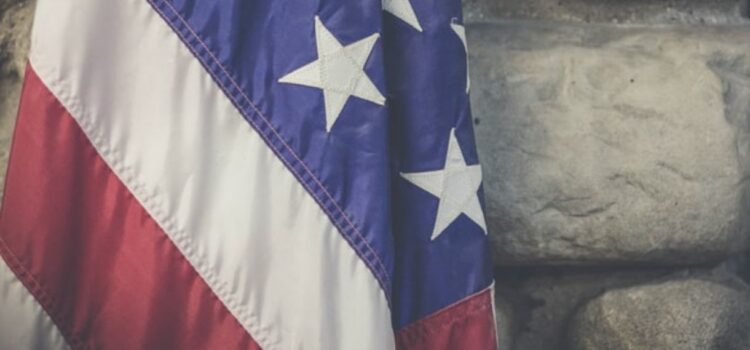

This article is an excerpt from the Shortform book guide to "Caste" by Isabel Wilkerson. Shortform has the world's best summaries and analyses of books you should be reading.
Like this article? Sign up for a free trial here .
What is the history of the Confederate statues in America? Why did some people resist the removal of these statues? What do they celebrate?
Confederate statues in America are monuments and memorials that have been erected to celebrate the leaders of the American Confederacy. The Confederacy was a faction formed by anti-democracy, pro-slavery group of states that seceded from the US after the election of Abraham Lincoln.
Read about the history of the Confederate statues in America, what they represent, and why their removal sparked such a heated debate in the American society.
Confederate Statues in America
Imagine if statues of King George III stood tall in major American cities. Imagine Hitler memorialized by a two-story monument in the middle of Berlin. These scenarios seem ridiculous considering the wars fought against these rulers. Yet, the Confederate statues in America stand tall across the country, celebrating the enemy leaders and their treasonous behaviors, rather than admonishing them.
The Confederacy, or the Confederate States of America, was an anti-democracy, pro-slavery group of 11 states that banded together to overthrow the national government to gain their sovereignty. They formed their own centralized government and attacked the United States to uphold white supremacy and secure the forced enslavement of blacks as a national standard. In another country, a group like this would be clearly identifiable as the enemy. In America, Confederate statues have been erected as a tribute to the enemy leaders.
There are more than 1,700 Confederate statues in America, standing tall in town squares, outside courthouses, and in front of schools. The most decorated and honored Confederate is Robert E. Lee, whose likeness or name is honored by more than 230 memorials. Lee was an educated military officer known for his adept strategies and pragmatism. He was also a slaveholder in Virginia, whose abuse of his slaves is well-documented. He served as Confederate general during the four-year Civil War, leading the charge against America to secure the domination of the white race and subjugation of the black race. He is instrumental in the deaths of approximately 750,000 people, a number equivalent to around 7 million people based on today’s national population.
In addition, the unwillingness of the country to condemn the Confederacy gave Americans the freedom to turn a blind eye to the South’s continued efforts to persecute blacks. Slavery was illegal, but southern states relegated former slaves to sharecroppers and made small grievances, such as loitering or vagrancy, felonies. The Klan and deputized mobs legally brutalized the subordinate caste through public lynchings and abuse. And the Jim Crow laws were successful in promoting segregation across the entire region and country eventually.
Monuments and memorials celebrating Lee and other Confederate leaders cropped up in southern communities. People who’d survived slavery and their descendants were forced to live in environments that celebrated the behaviors of those who fought to permanently remove their agency. Other locations in the north and west started erecting monuments in Lee’s honor and naming public buildings and spaces after him. The construction of Confederate statues in America continued into the 20th century, and the lore of the plight of the Confederacy became supercharged through sympathetic depictions.
The Debate Over Memorializing Hate
As the 20th century turned into the 21st century, debate over the glorification of these enemies of state blossomed. The dominant caste held fast to their beliefs that Confederate leaders were heroes who represented the pride of the South, and opponents saw these monuments as a slap in the face to equality. They believed celebrating the Confederacy was a celebration of a period of time when blacks were legally enslaved, tortured, and killed. A call for the removal of these statues and Confederate flags from government buildings swept the nation, and a strong contingent rose up to defend them.
The most significant of these actions occurred in Charlottesville, Virginia in Summer 2017. A group of white supremacists held a rally in downtown Charlottesville to protest the city’s plan to remove a statue of Robert E. Lee from the town square. The previous night, this group marched through the University of Virginia’s campus dressed in khakis and white shirts, carrying tiki torches and chanting “Sieg Heil.” The scene was a reenactment of the torchbearers’ river of light procession that welcomed Hitler as the new Chancellor of Germany in 1933.
That day in Charlottesville, the ralliers stood waving both Confederate flags and flags imprinted with swastikas, drawing a direct connection between Confederate pride and the Nazis. A counter group formed, and a white supremacist drove his car into their gathering, killing a white woman and injuring several others.
Earlier that year, a SWAT team was deployed in New Orleans at 2 a.m. to protect a construction crew hired by the city’s mayor to remove four statues from the downtown area, one of which was of Lee. The contractors were covered from head to toe to hide their identities after a violent backlash swelled against any company that accepted the job, including threats and firebombs. All of the statues were eventually removed, and more states have slowly started to remove Confederate flags and symbols from state flags and government buildings. But many still view these actions as attacks on American tradition, including President Trump.

———End of Preview———
Like what you just read? Read the rest of the world's best book summary and analysis of Isabel Wilkerson's "Caste" at Shortform .
Here's what you'll find in our full Caste summary :
- How a racial caste system exists in America today
- How caste systems around the world are detrimental to everyone
- How the infrastructure of the racial hierarchy can be traced back hundreds of years





